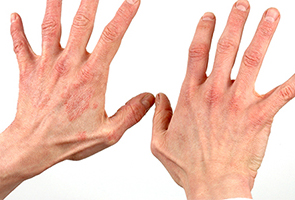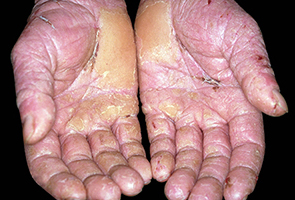Why Use and/or Provide Gloves?
Common reasons given for why gloves are not worn include:
- Interferes with work -- can't grip tools as well with gloves or feel work
- Uncomfortable -- too hot, don't fit properly, or feel awful when hands are wet
- Not knowing when gloves should be worn
- Not required or supplied by the employer.
While these are understandable, there are important safety and health reasons for why gloves should be supplied and worn.
- Human – Hand injuries, including cuts, amputations, burns, and skin disorders, can be painful and, in the worst case, end a person's career. Many products and materials commonly used in construction contain chemicals that can cause serious problems if they come in contact with a workers' skin.
- Financial – OSHA estimates that one dermatitis claim, for example, can cost more than $20,000: $9,294 in direct costs (which includes the cost of medical care and wages lost due to the injury, whether paid for by the employer, a health and welfare fund, or the workers' compensation carrier), and $11,152 in indirect costs (which includes, for example, supervisory time spent on investigation and reports, and loss of worker productivity).
- Required – OSHA requires employers to provide gloves and workers to use them when "a workplace hazard assessment reveals that employees face potential injury to hands and arms that cannot be eliminated through engineering and work practice controls…" Potential hazards include skin absorption of harmful substances and chemical or thermal burns. In addition, if a product contains a chemical that is potentially hazardous to workers, manufacturers are required to label their product and include information in the product's Safety Data Sheet (SDS/MSDS) on glove and other personal protective equipment requirements.
Learn more
- "An Employer's Guide to Skin Protection" -- CPWR
- Take Matters into Your Own Hands: Understanding Hand Injuries in the Workplace - Occupational Safety & Health Magazine
- Regulations & Other Considerations
- "Chemicals and Related Skin Hazards" – lists common chemicals and what happens when they come in contact with skin -- CPWR-EPI
- The Economics of Intervention: Protecting Workers Who Come in Contact with Wet Portland Cement
- Skin Exposures & Effects - The National Institute for Occupational Safety & Health (NIOSH)



